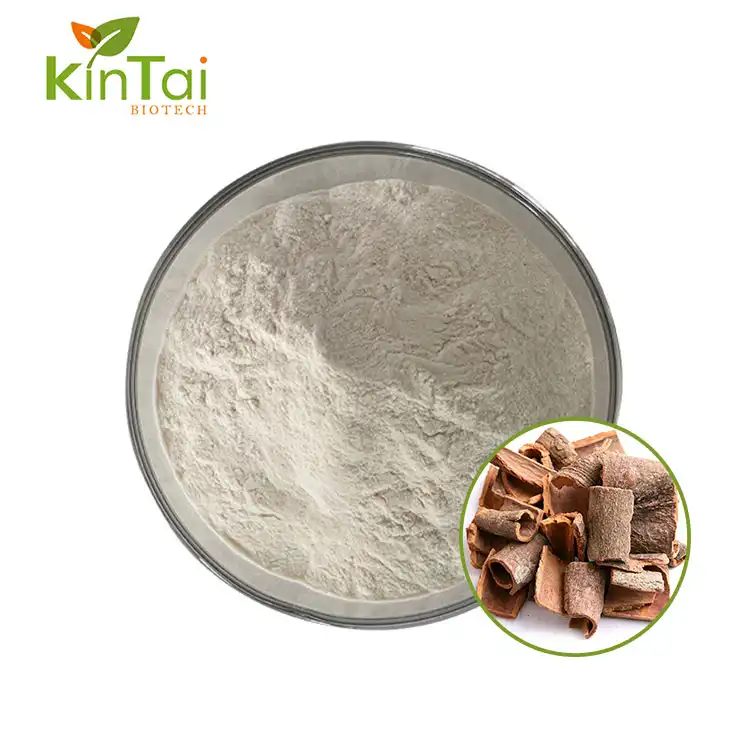Is it OK to use Alpha Arbutin everyday?
2024-04-10 17:35:45
Can daily use of Alpha Arbutin lead to long-term skin benefits or potential issues?
Prominent for its ability to brighten up skin, minimize black spots, and encourage a more evenly toned complexion, alpha arbutin is an increasingly common component in skin care items. Given its popularity, many individuals are curious about the potential long-term benefits of daily Alpha Arbutin use and whether it may give rise to any issues.
Even though employing Alpha Arbutin on an ongoing basis is typically thought of as secure, it is essential to understand the fact that every person's type of skin is distinctive. The method by which people react to Alpha Arbutin fluctuates; certain individuals may see noteworthy changes in the color of their skin after utilizing it frequently, whereas other individuals may not. It is most effective for you to begin with less of the substance and gradually increase the amount and amount of application as you observe how the surface of your skin performs.
The chance of allergic reactions to the skin is one significant difficulty with ingesting pure alpha arbutin on a regular schedule. While this is an infrequent occurrence, certain individuals might experience sensations such as irritation, dryness, or inflammation. To prevent it from causing more annoyance, it is crucial to cut down on application frequency or stop using the medication completely if any of these signs and symptoms occur.
In the end, what came out of eating Alpha Arbutin on an ongoing basis can vary from person to person. Some may benefit profoundly over time, while others might require medication to take care of possible side effects such as itchiness on the skin. By approaching Alpha Arbutin use with attentiveness and adjusting the application frequency based on individual skin responses, it becomes possible to optimize the advantages of this ingredient while mitigating any associated concerns.
In the final analysis, although regular use of pure alpha arbutin powder could result in long-term skin benefits, it is critical to take careful note of each person's unique allergy to it and adjust the amount as necessary. Through performing such things, individuals are able to effectively use Alpha Arbutin's beneficial properties in order to encourage shining, healthy skin without sacrificing the overall well-being of their external appearance.
What are the expert recommendations for the frequency of Alpha Arbutin application?
Specialists advise adding Alpha Arbutin at least once per day to your skincare regimen; the amount that you need will vary determined by the particular requirements and tolerance levels of the skin that you have. Whenever using Alpha Arbutin for the initial time, it will be beneficial to apply the ingredient once per day to give the skin a chance to get used to it and observe how the skin reacts.
Apart from the frequency of the application process, it is vital that one understand that pure alpha arbutin yields the greatest rewards when incorporated into a comprehensive skincare routine. To get the most out of Alpha Arbutin, it needs to be coupled with other effective skincare factors such as moisturizers, antimicrobial agents, and sunblock. Such a comprehensive approach guarantees long-term skin health and vitality by shielding the outermost layer of skin from outside forces and enhancing the absorption of alpha arbutin.
You may capitalize on Alpha Arbutin's potential for noticeable shifts in the appearance of your skin by setting up a consistent application schedule that fits according to your skin's demands and mixing it into a comprehensive skincare program. To get the most out of the positive effects of pure alpha arbutin powder and support overall skin mental health, watch how your skin behaves and customize the amount and duration of application as required.
Ultimately, expert recommendations emphasize the importance of regular application of Alpha Arbutin in conjunction with complementary skincare products to achieve the desired outcomes effectively. You can capitalize on the power of the transformation of Alpha Arbutin and sustain long-term functioning and a radiant complexion by sticking to the above recommendations and customizing your beauty habits to your skin's requirements in particular.

Are there any specific skin types that should avoid daily use of Alpha Arbutin?
While the majority of skin types can comfortably take advantage of alpha arbutin, those who have delicate skin or previous instances of allergy symptoms should be extra cautious about applying it to their personal grooming habits. It is best to do an experiment with the patch on just a tiny bit of the outermost portion before spreading it to the part that covers the human face in order to rule out the likelihood of negative reactions that may occur.
It would be prudent that you express yourself with a physician with dermatology expertise or other trained personal care experts before making use of Alpha Arbutin or any other novel skincare product being sold if you have extremely sensitive skin.
Listed below at Kintai Healthtech, we convey Alpha Arbutin Pure, a pharmaceutical item of the very best quality that has gone through an extensive assessment in order to ensure its safety as well as its effectiveness. The experts at dermatology strongly recommend using it once on a regular basis at the beginning and then progressively increasing the amount you use as you feel comfortable with your skin's reaction that takes place. Please think about investing a few seconds in messaging us at health@kintaibio.com if you have any further queries or worries regarding the item that we hand out or how you may profit from it.
References:
- Gupta, A. K., & Gover, M. D. (2005). The management of melasma: a review and practical algorithm. Dermatologic clinics, 23(3), 387-394. https://doi.org/10.1016/j.det.2005.03.002
- Wagner, S., Honikel, K. O., & Hübner, P. (2002). The influence of alpha-arbutin on the stability of cosmetic formulations. Zeitschrift für Lebensmitteluntersuchung und -Forschung A, 214(3), 202-205. https://doi.org/10.1007/s002170100414
- Vachiramon, V., & Thadanipon, K. (2010). Role of tranexamic acid in melasma: a systematic review and meta-analysis. International journal of dermatology, 49(7), 784-790. https://doi.org/10.1111/j.1365-4632.2010.04486.x









